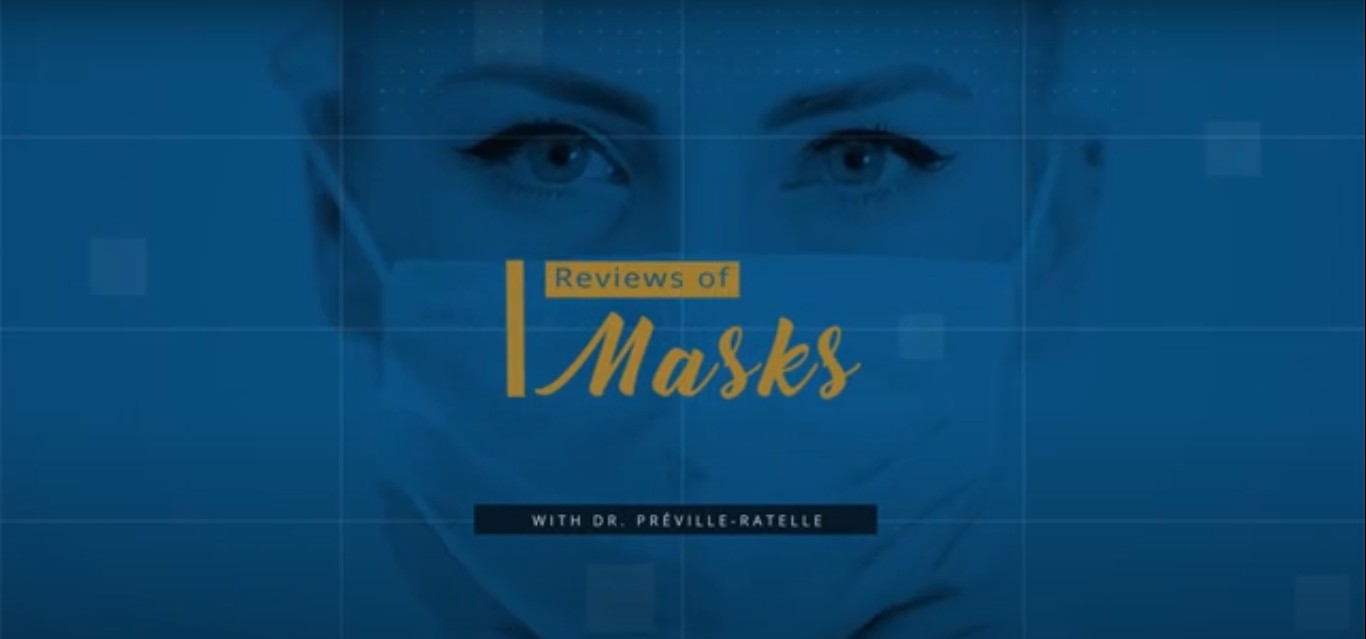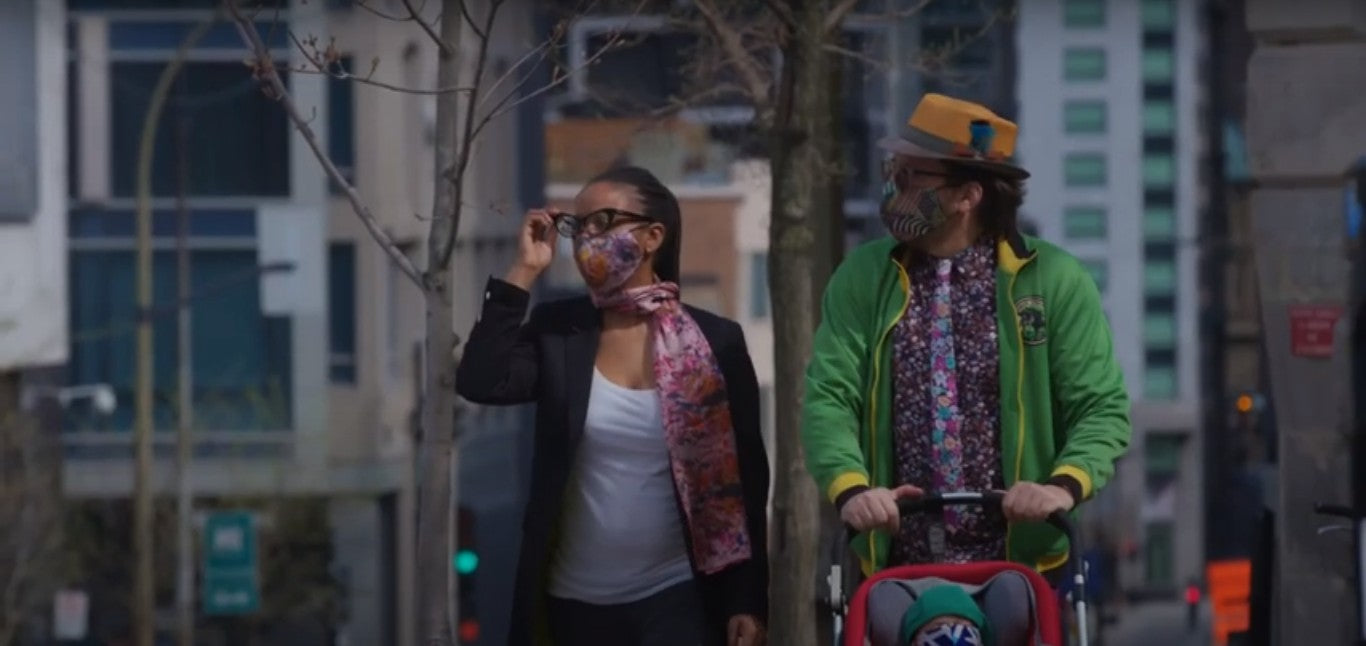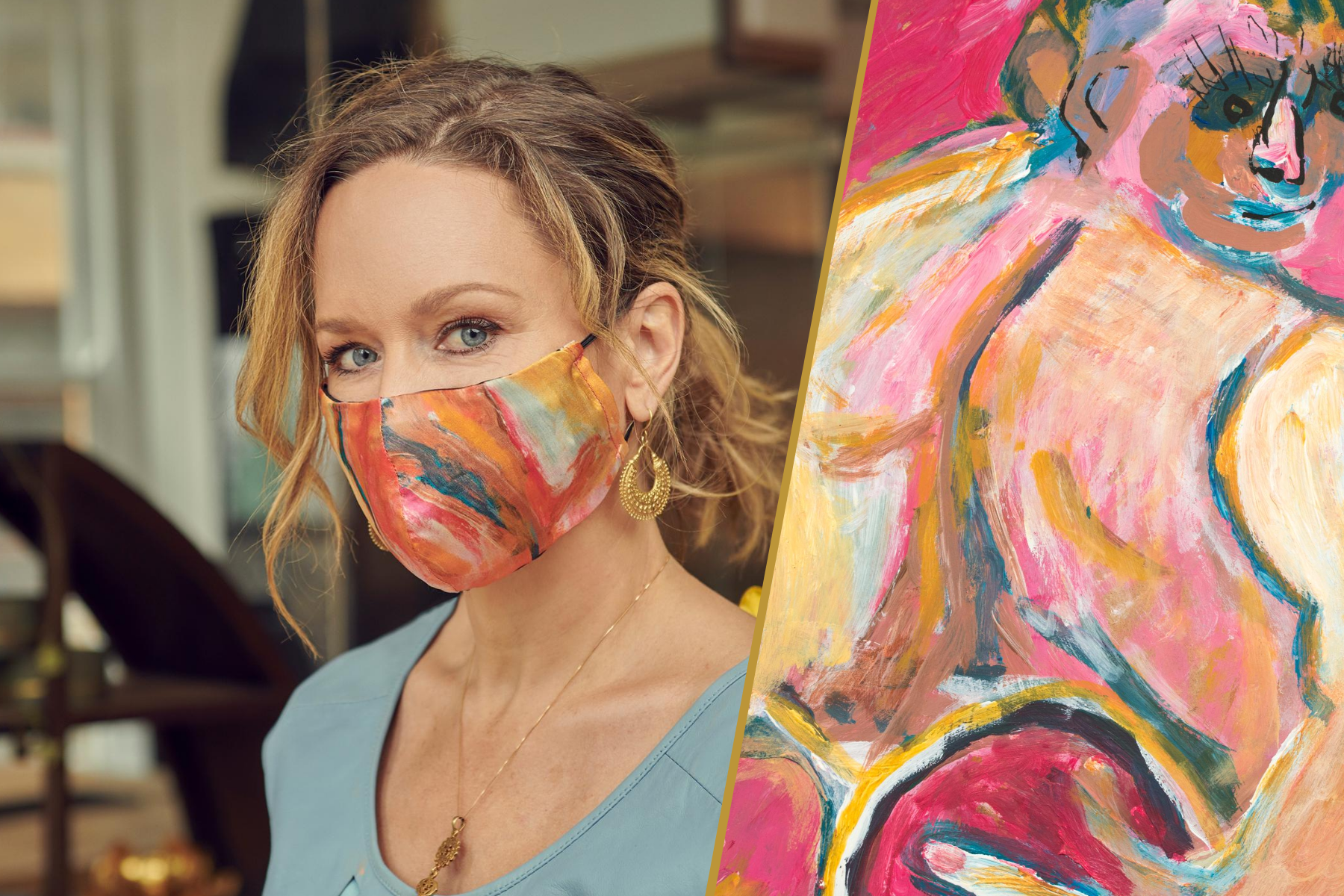
How to choose your washable face mask with the Dr. Préville-Ratelle | Nathon Kong
Hundreds of non-medical masks have been created during the COVID-19 pandemic. We all want to protect our communities and ourselves from the coronavirus disease, but with so much information available, it can be difficult to learn what makes an effective face mask.

We asked Doctor Sébastien Préville-Ratelle, a specialist in pulmonology working at CIUSSS de l'Est-de-L'île-de-Montréal, for his advice on how to put on, wear, and take off a face mask, what makes them effective, and to review some existing washable face masks.
How Are Masks Effective Against the Coronavirus Disease?
Doctor Préville-Ratelle stresses that wearing a face mask is effective against spreading the coronavirus disease.
The goal of wearing a face mask isn’t so much about protecting yourself but about protecting others from the disease if you have it.
- Doctor Préville-Ratelle
COVID-19 is a respiratory disease and is transmitted through microscopic water droplets exhaled by people infected with the virus. Not everyone who is infected shows symptoms. According to the World Health Organization (WHO), 80% of infections are mild or entirely without symptoms. New research shows that asymptomatic and presymptomatic transmission is a major factor in how the COVID-19 virus spreads. By wearing a face mask, you prevent yourself from accidentally spreading COVID-19.

Many doctors are calling on the government of to make wearing a mask in public spaces mandatory. New studies are showing that wearing a mask is most effective in preventing coronavirus from spreading when worn by at least 80% of the population. If fewer than 80% of a population wears a mask, its effectiveness is greatly reduced.
What is the Proper Way of Wearing a Face Mask?
The most important thing to do before putting on a face mask is to wash your hands. Doctor Préville-Ratelle recommends that you pick up the mask by the straps. This allows you to put the mask on without touching the front or the back of the mask or your face. Masks with elastic cords that go around the ears like Nathon Kong’s silk face mask are the easiest to put on this way. Then you adjust the front of the mask so that it fits comfortably on the bridge of your nose and under your chin.
To take off the mask you should remove it by the straps and avoid touching the front or the back of the mask. It is important to wash your hands after putting the mask aside.
WHO has useful infographics that show the proper way of putting on and taking off the mask, which can be found here.
What Makes a Good Face Mask: Reviewing Existing Masks

According to doctor Préville-Ratelle, being able to breathe through the mask is important. If a mask is too thick, breath escapes around the sides of the mask rather than filtering through it. Thicker masks are also rigid and uncomfortable to wear for long periods of time.
Lighter masks can have their flaws, too. While they are easier to breathe through they may only have one layer of fabric. Doctor Préville-Ratelle recommends wearing a mask with at least two layers to work as a filter. Masks with one layer may be more flexible but many are not made out of premium materials. The mask will not fit well around the face and will not be comfortable throughout the day.
These guidelines fall in accordance with much of WHO’s technical advice on how to wear a face mask.
Doctor Préville-Ratelle Reviews Nathon Kong Washable Silk Face Mask
Nathon Kong has a really amazing piece of art made by amazing artists. It's fashionable. You want to wear it. You want to go outside with it so people can see it.
- Doctor Préville-Ratelle
To begin, Doctor Préville-Ratelle discusses the use of premium materials in the mask. The mask can be washed and reused. He also comments that silk is a good choice of material for face masks. Silk accumulates less moisture than other fabrics. With less moisture in the mask it can be tolerated for longer periods of time.
The combination of silk and cotton also makes a very effective filter. Premium cotton’s high thread count works as a physical net for capturing airborne particles. The electric charge of silk creates an electromagnetic filter, capturing particles magnetically.
We have an article that goes into further depth on the materials used for our silk face masks here.

Nathon Kong silk face masks have two layers of material. Because the masks are made out of premium materials it is still light and easy to breathe through. The government of Canada recommends that a non-medical face mask should have at least two layer while WHO recommends three. If you would like to add a filter as a third layer, there is a pocket in between the front and back of the mask where one can be added. Doctor Préville-Ratelle recommends coffee or vacuum filters. You can even add a medical mask if you have access to them.
Read our article: 5 of the best DIY Filters to use with a washable face mask in silk.
Another feature of the mask is its reversibility. Should you want to wear a more conservative mask, Nathon Kong silk face masks can be reversed to show the black side of the mask and have the art on the inside.
To finish his review, Doctor Préville-Ratelle comments on the nose clip. Nathon Kong silk face masks come with a metal wire sewed into the top of the mask. This allows the mask to be adjusted so that it fits comfortably on the bridge of the nose to keep it from sliding off. Because the mask stays in place on the face, it is comfortable to wear glasses with a Nathon Kong silk face mask.
Watch the full review with Doctor Sébastien Préville-Ratelle on our YouTube channel here.
Find here the collection of washable face masks with filter made from mulberry silk reviewed by Doctor Sébastien Préville-Ratelle. 10% of the proceeds from the sale of the masks are donated to Les Impatients, a non-profit organization that support artists suffering from mental health issues through therapeutic art programs.
About Doctor Sébastien Préville-Ratelle
Doctor Sébastien Préville-Ratelle earned his doctorate of medicine at the Université de Montreal. He completed his residency at the Université de Montreal in family medicine, internal medicine and specializes in pulmonology, the study of the respiratory system and diseases that affect the lungs. Dr. Préville-Ratelle is well known in the pulmonology domain, having published 3 scientific papers in the field. He is currently working as a doctor at CIUSSS de l'Est-de-L'île-de-Montréal during the COVID-19 pandemic.

Dr. Préville-Ratelle’s family is incredibly active in their community. His twin brother Emmanuel Préville-Ratelle is a member of the College de l’Assomption’s fundraising campaign, an administrator of the École Les Mélèzes, is the president of the Joliette Art Museum Foundation’s board of directors and was co-chair during the 7th edition of the Alzheimer’s Society of Lanaudière’s Dinner Show. A full list of his involvements can be found here on his law firm page.
Sébastien’s other twin brother Nicholas Préville-Ratelle works as a pro bono lawyer for the Joliette Art Museum. He volunteered for a major fundraising campaign held by the museum with his mother and brother and is a member of Club Richelieu Joliette, a group dedicated to developing the younger generation. A full list of his accomplishments can be seen on his law firm’s page here.
His mother Marie-Éveline Préville is a member of the Joliette Art Museum Foundation’s board of directors, an administrator for the Université de Quebec at Trois-Rivieres, and was an honored member of the raffle committee for Diocèse de Joliette, along with participating many other activities in her community. A full list of her accomplishments can also be read on her law firm’s page here.
We were honored to have Doctor Sébastien Préville-Ratelle come speak with us on the topic of face masks and are thankful for his insights.









Leave a comment
This site is protected by hCaptcha and the hCaptcha Privacy Policy and Terms of Service apply.